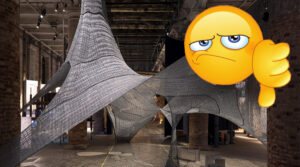The lack of digitalization in tennis clubs is not just a matter of convenience, it’s a critical roadblock to growth, relevance, and community engagement.
Old systems in a new world
Even with the global shift towards digital transformation, many tennis clubs still operate in a surprisingly analog manner. Court reservations are handled by phone calls or paper sheets, payments are collected in cash, and communication happens mostly through word of mouth. Few clubs track player data, run engaging online platforms, or provide visibility for their programs.
This absence of digital tools is not just an inconvenience for players, it’s a major missed opportunity for growth. In a time when consumers expect quick access, personalized experiences, and smooth digital interactions, clubs that resist modernization risk losing younger players and falling behind innovative organizations.
What tennis clubs should digitalize
To stay relevant and competitive, tennis clubs need to adopt digital solutions that enhance operations, and improve the member experience. Here’s what that looks like:
1. Online Court Booking Systems
-
Why: Players want to book courts anytime, without calling the front desk.
-
Benefits: Reduces scheduling conflicts, improves court utilization, and saves staff time.
-
Example: Clubs using ClubSpark in the UK allow members to book courts in seconds via mobile apps.
2. Digital Payments & Membership Management
-
Why: Cash payments are outdated, members expect online transactions.
-
Benefits: Secure, faster payments, automated invoicing, and better financial tracking.
-
Example: The USTA’s digital platform allows members to manage subscriptions and renewals seamlessly.
3. Player Data Tracking & Analytics
-
Why: Data-driven training keeps players engaged and motivated.
-
Benefits: Coaches can tailor sessions, monitor progress, and organize fairer competition formats.
-
Example: Elite clubs use PlaySight Smart Courts to track performance stats and provide instant video replay.
4. Communication Platforms & Match Notifications
-
Why: Players want instant updates on schedules, tournaments, and social events.
-
Benefits: Stronger community engagement, fewer no-shows, and increased participation.
-
Example: Many European clubs use WhatsApp integration with booking platforms to notify players of last-minute availability.
5. Social Media & Online Presence
-
Why: New players, sponsors, and local communities find clubs online first.
-
Benefits: Expands visibility, attracts younger audiences, and showcases club culture.
-
Example: The All England Lawn Tennis Club (Wimbledon) runs digital-first campaigns that boost global visibility and inspire local clubs to do the same on a smaller scale.
6. Automated Tournament & League Management
-
Why: Manual brackets and paper scoreboards are inefficient.
-
Benefits: Faster organization, live score tracking, and easier ranking updates.
-
Example: Many U.S. clubs use TennisLink to run USTA leagues fully online, from registration to results.
7. Community-Building Apps
-
Why: Players don’t just want matches, they want connection.
-
Benefits: Encourages networking, easier partner-matching, and higher retention.
-
Example: Platforms like TennisPAL or Slinger App let members find hitting partners and organize games instantly.
The urgency of digital adoption
Digitalization is no longer optional, it’s the foundation of a modern tennis club. Automating repetitive tasks allows staff to focus on coaching and building community. Data insights improve training. Online platforms make clubs more attractive to both new members and sponsors.
The longer clubs delay, the larger the gap grows between what’s possible and what’s real. And the more opportunities they risk losing.


 Although democracy and innovation aren’t a perfect symbiotic pair, their relationship is deeply intertwined and they greatly depend on each other.
Although democracy and innovation aren’t a perfect symbiotic pair, their relationship is deeply intertwined and they greatly depend on each other. In today’s world, the line between artistic expression and commercial interest is blurring faster than ever, raising important questions about what art truly means in a consumer-driven culture.
In today’s world, the line between artistic expression and commercial interest is blurring faster than ever, raising important questions about what art truly means in a consumer-driven culture.